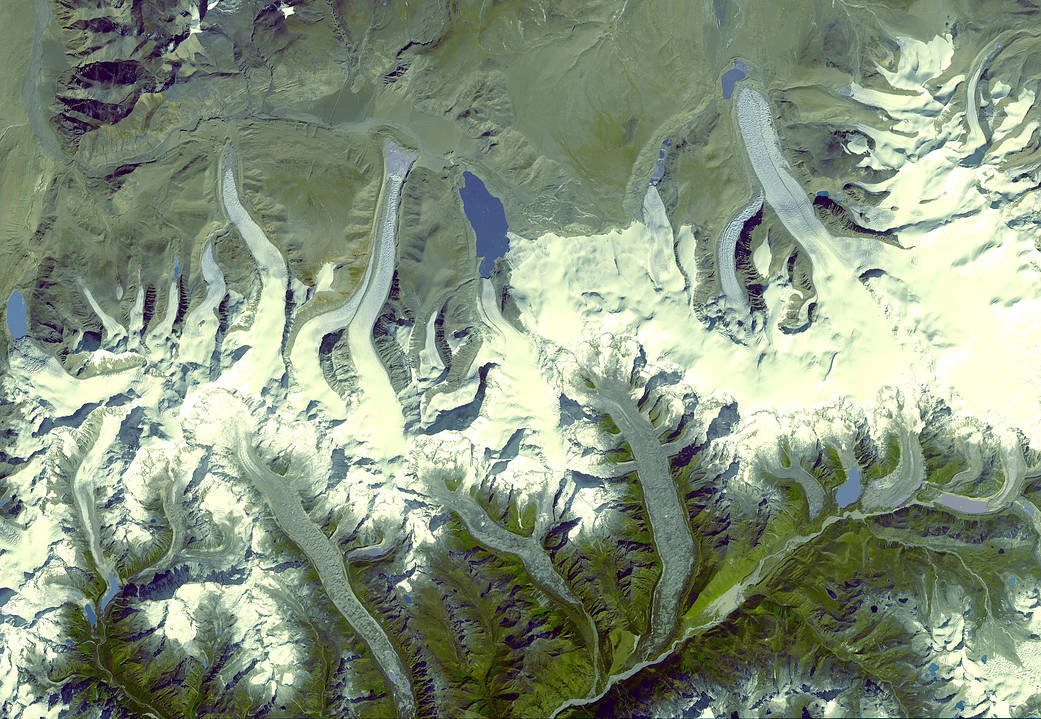
One of the highest mountain reliefs on Earth can be found in the tiny country of Bhutan. Sandwiched between eastern India and the Tibetan plateau, Bhutan hosts peaks that reach between 5,000 and 7,000 meters (16,000-23,000 feet) in height. These mountains are neighbors to Mount Everest, Earth’s highest peak at 8,850 meters (29,035 feet). The impressive Bhutan Himalayas are permanently capped with snow, which extends down valleys in long glacier tongues. Because of weather patterns on each side of the Himalaya and differences in topography, the glaciers on each side of the mountain are distinctly different from one another and are likely to react very differently to climate change.
Understanding how glaciers may evolve is important because mountain glaciers are the proverbial “canary in the coal mine” when it comes to tracking global warming. Along with polar ice, they are the things most sensitive to warming temperatures. On top of being harbingers for climate change, melting glaciers can cause catastrophic floods, making it essential to monitor them regularly. Since most glaciers are remote and hard to get to, remote sensing is crucial to ongoing monitoring.Image Credit: NASA/GSFC/METI/ERSDAC/JAROS and U.S./Japan ASTER Science Team

























